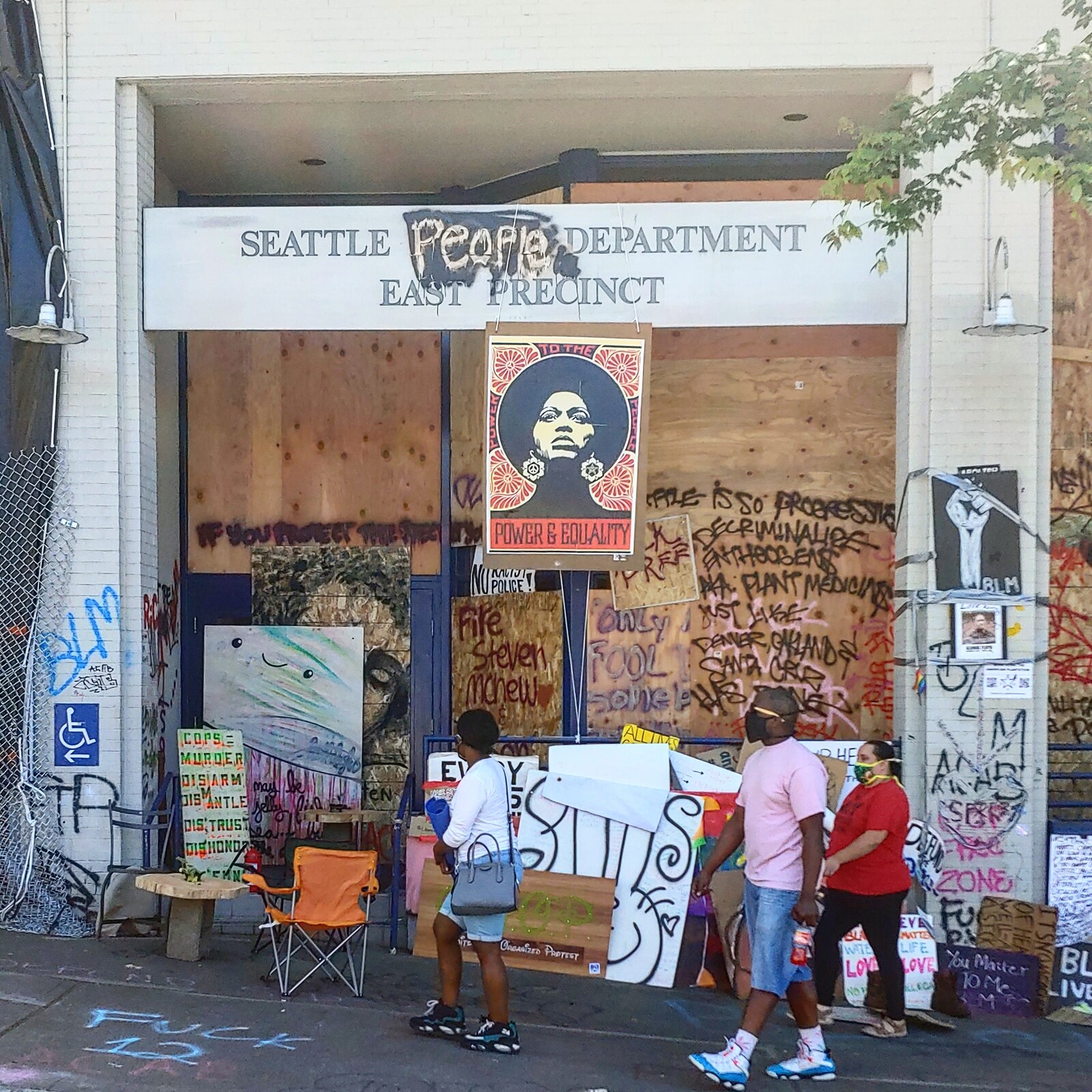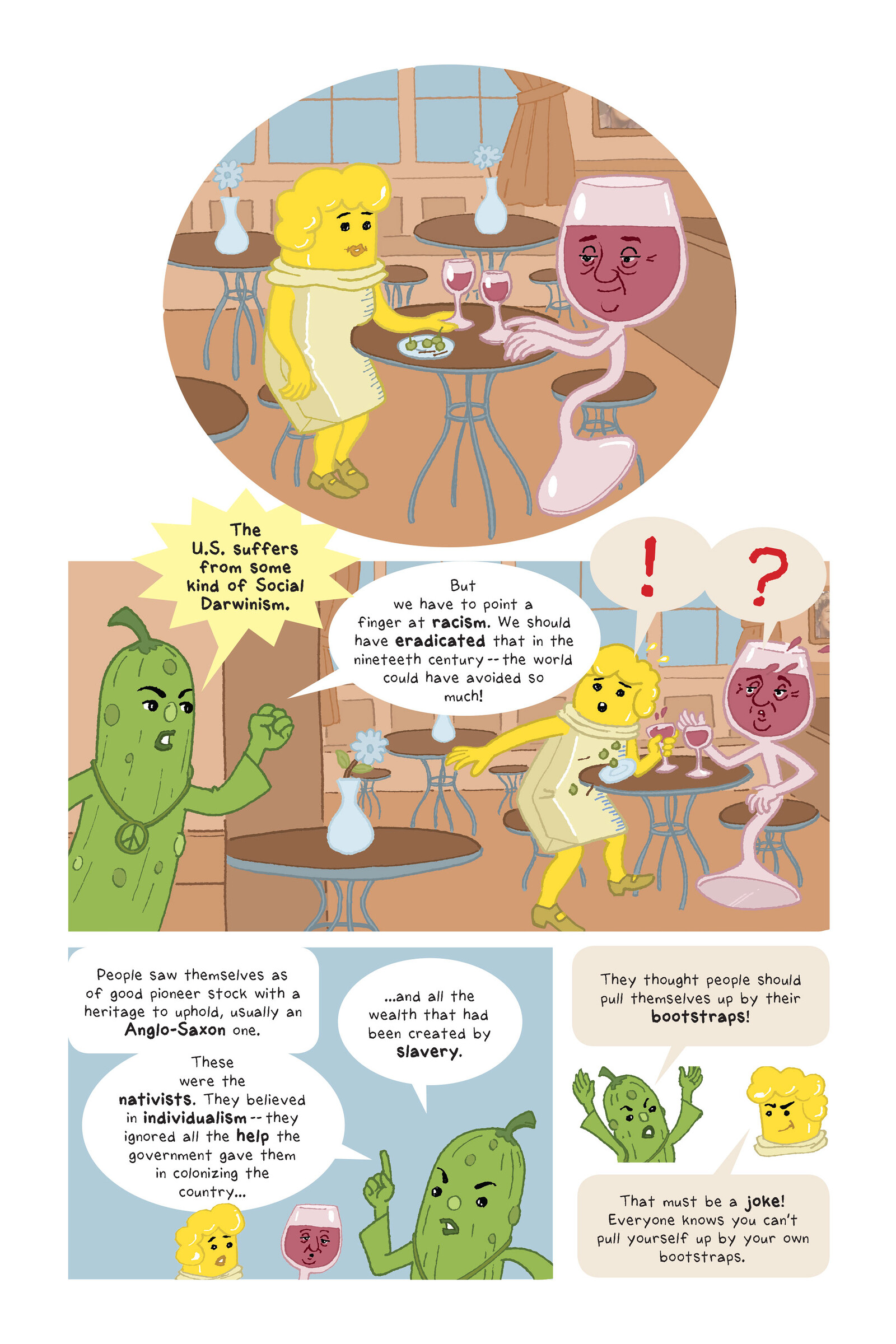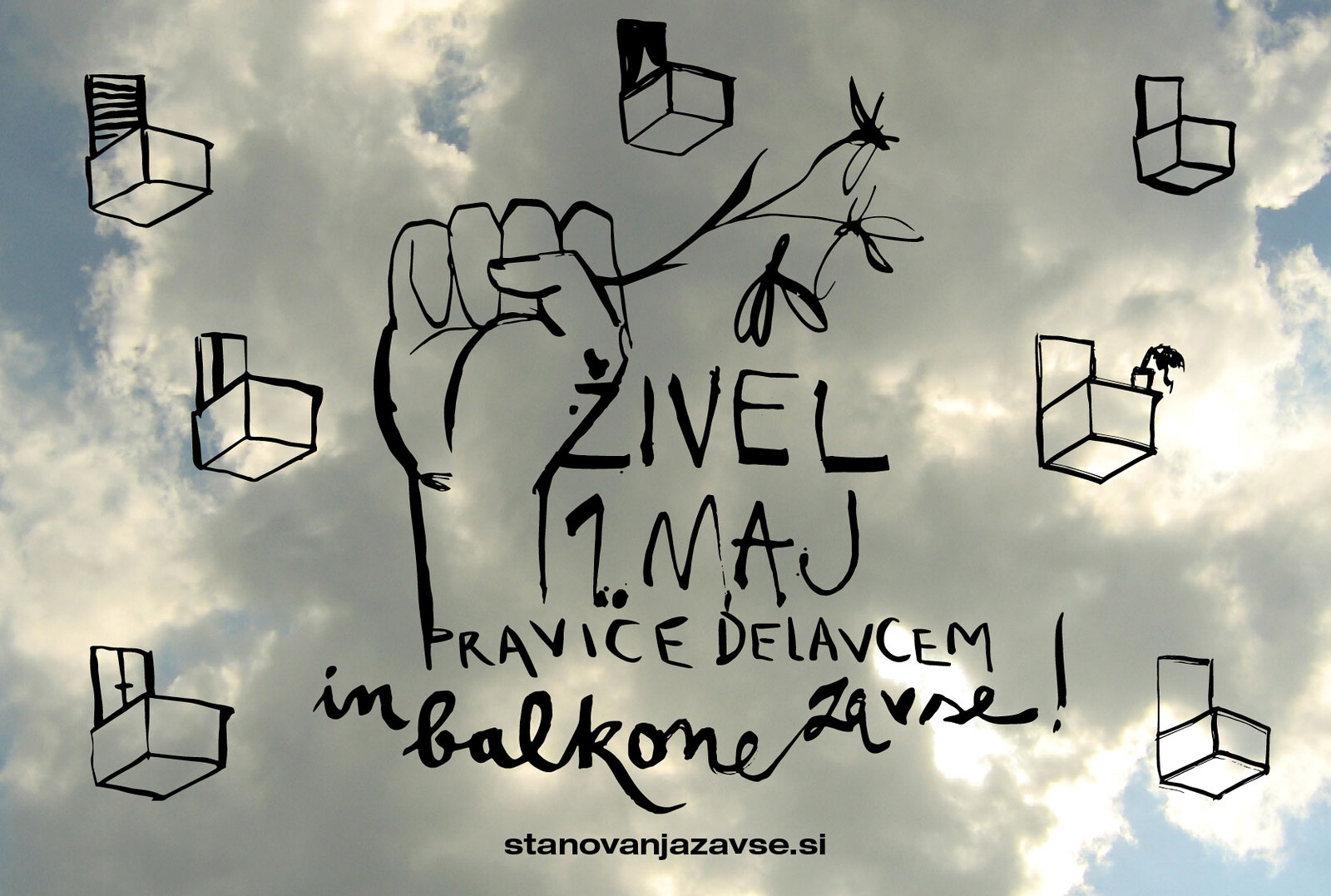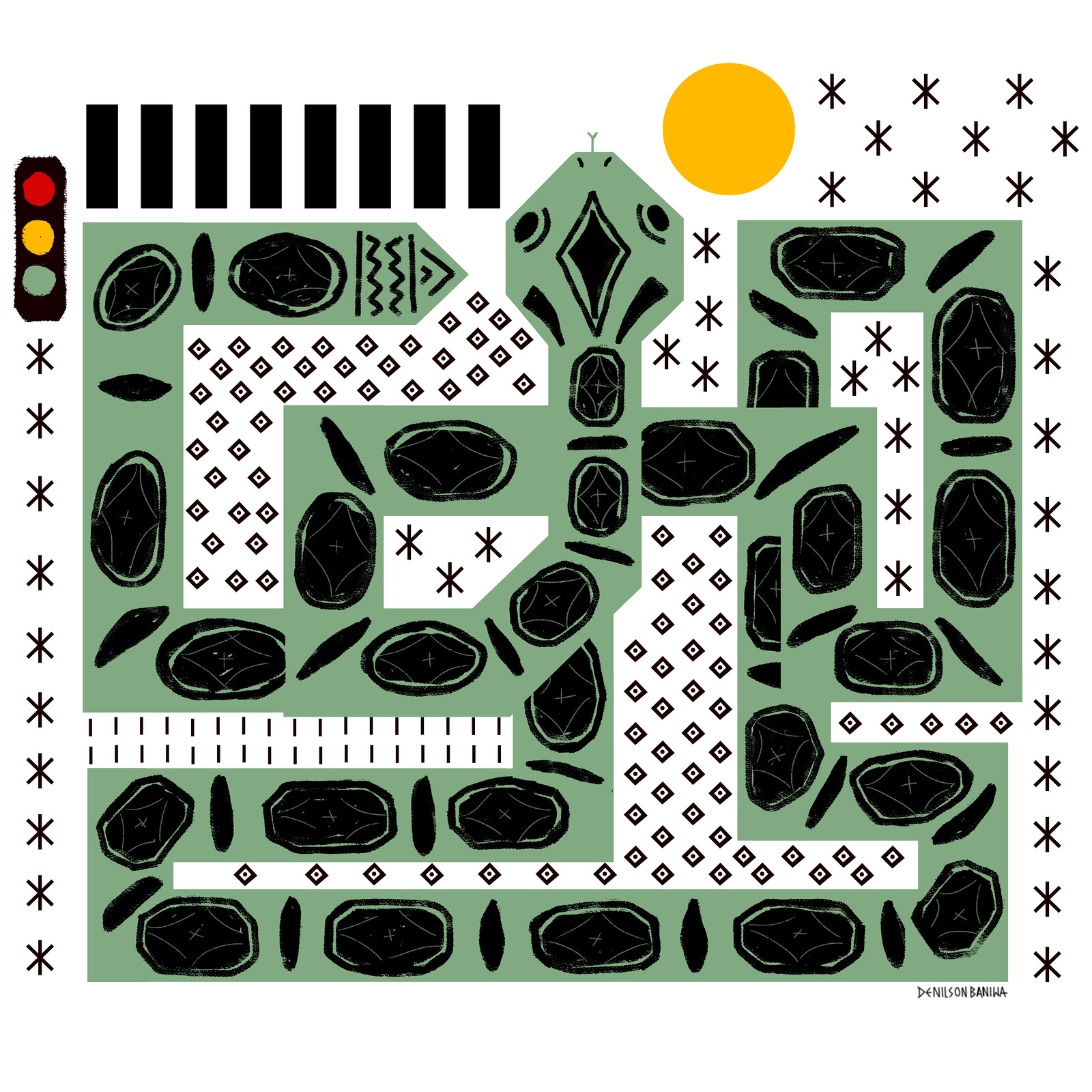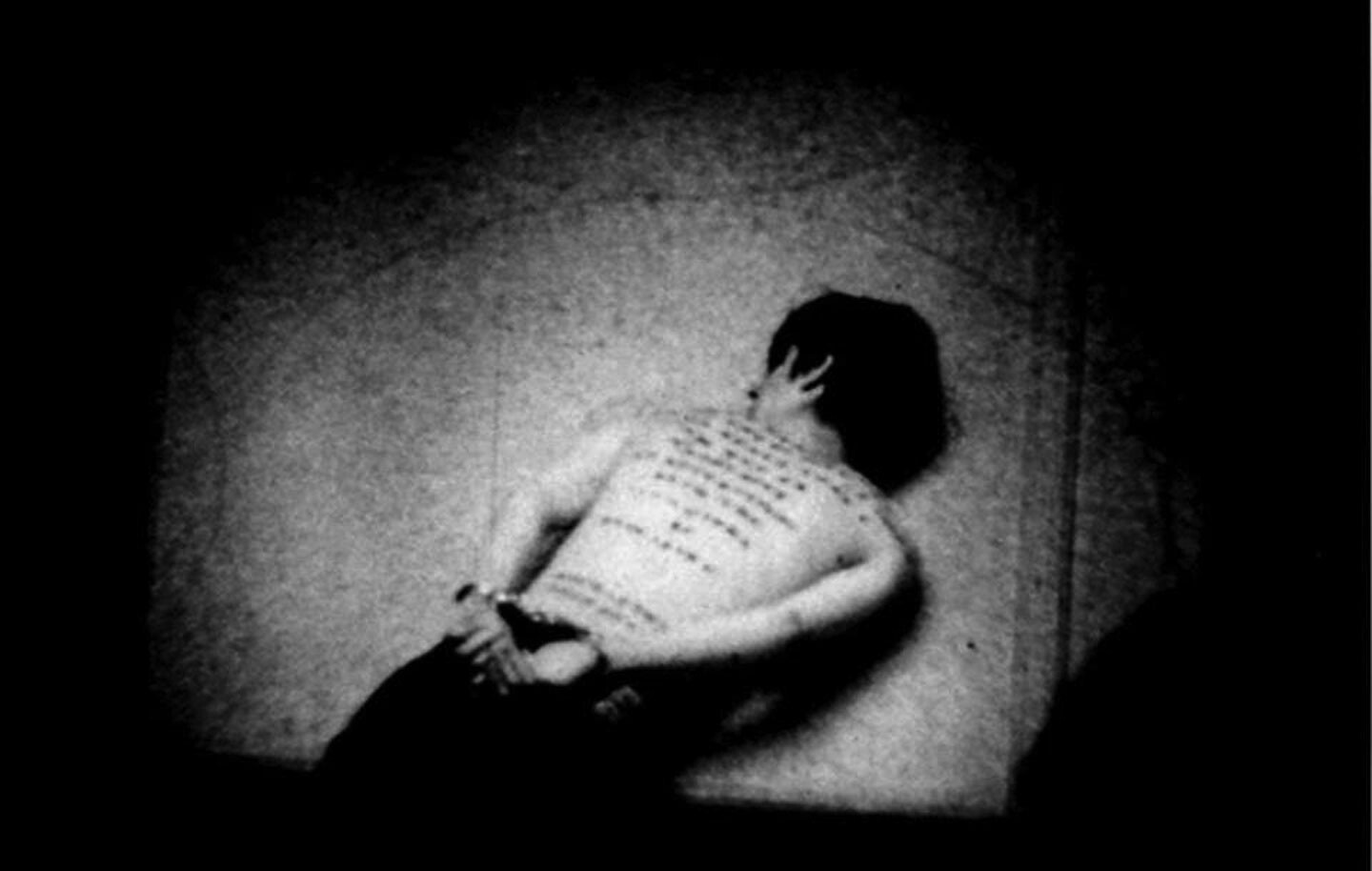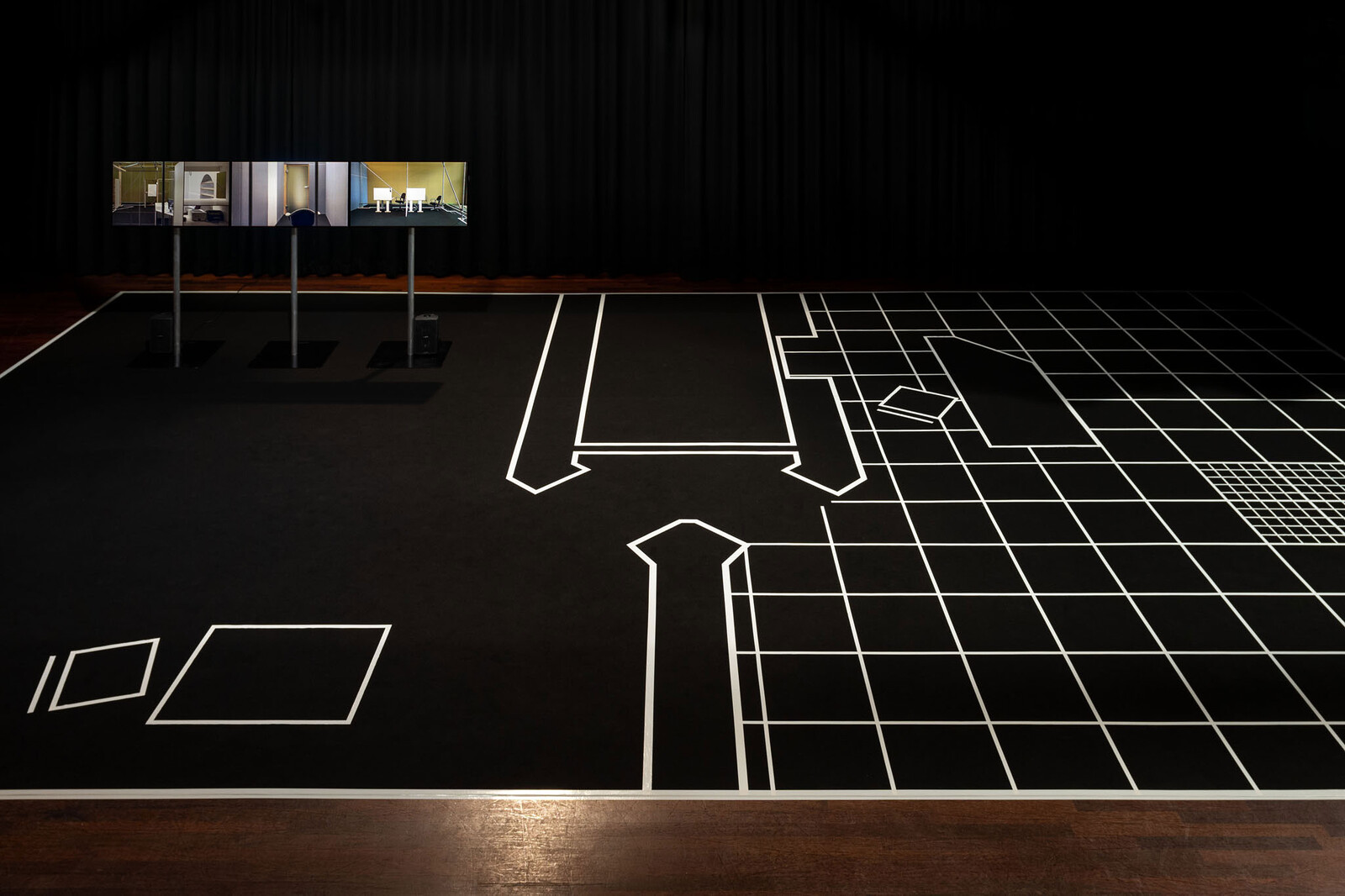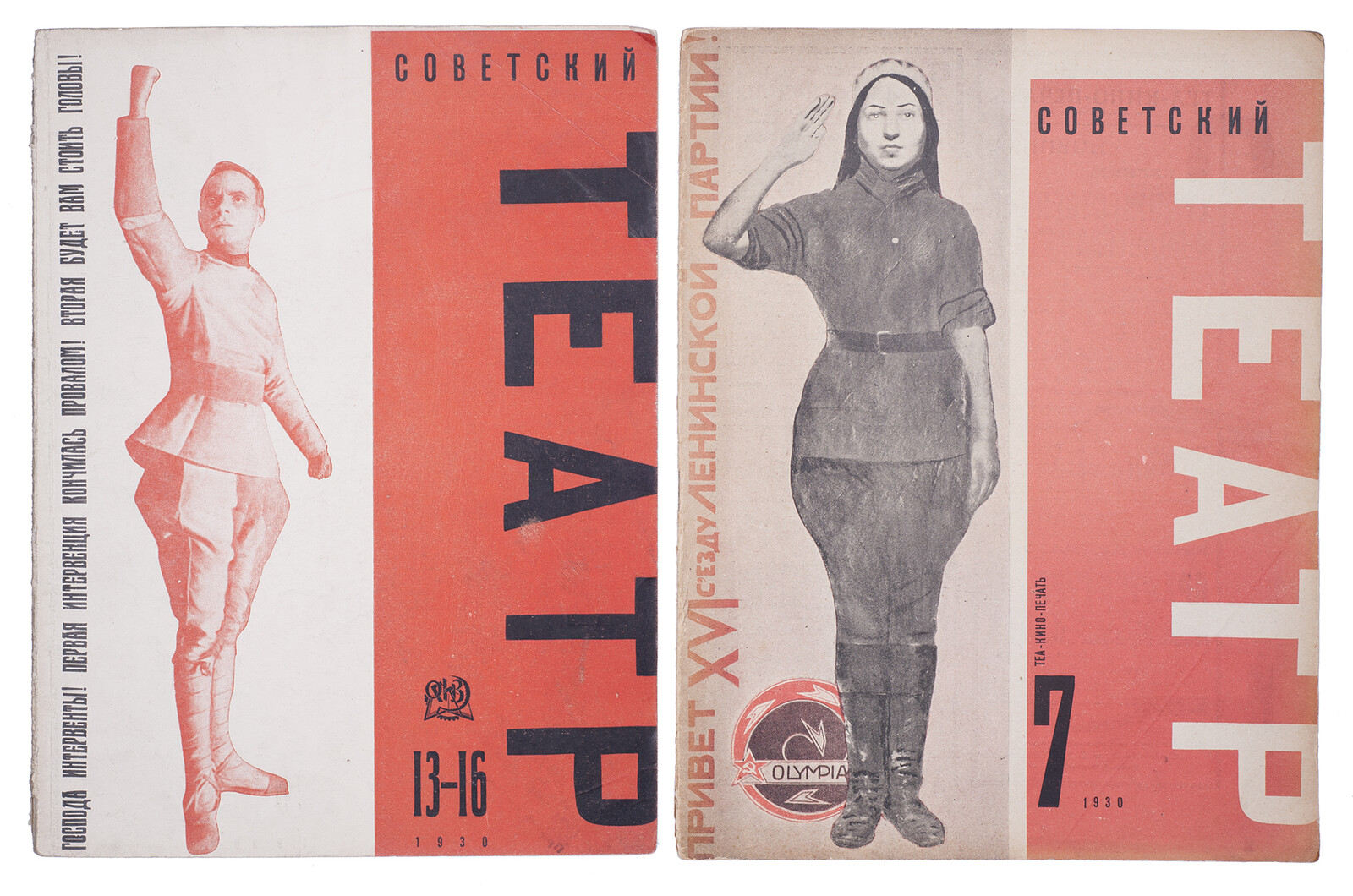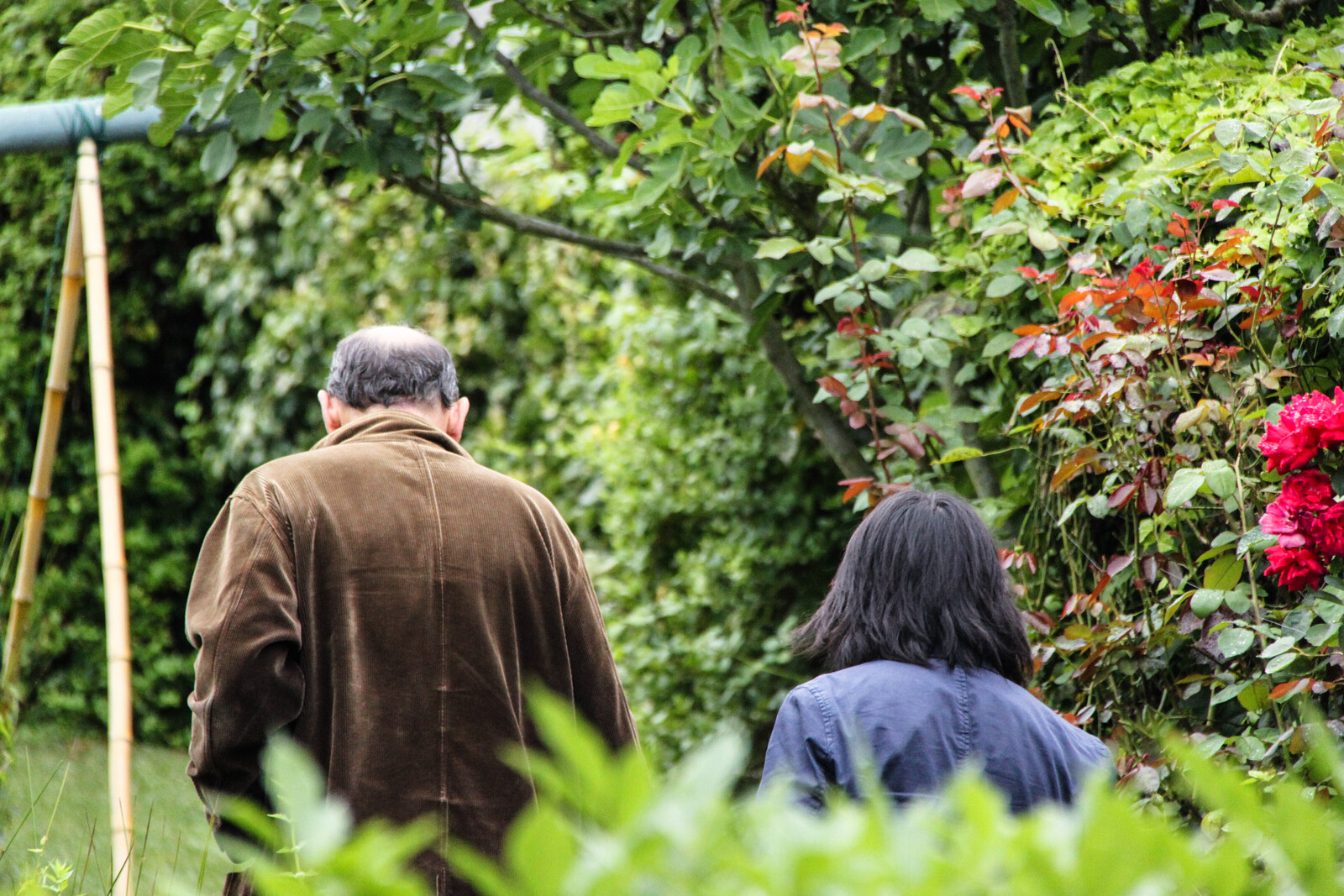If we begin with the understanding that police protect property and their owners, we can expect this to be its primary consequence: those who have very little property in a community are bound to experience a frequency of bad encounters with law enforcement that is much higher than those who have a lot of property. And so it is. What we find in the US, the world’s top ownership society for the past hundred years, is a vast jail, prison, and parole system filled with men and women who do not own much of anything. From this fact, which links poverty to the business of policing, we also find an explanation for the overrepresentation of black Americans (who make up about 13 percent of the general population) in the US’s state prisons (they make up 40 percent of the penal population).
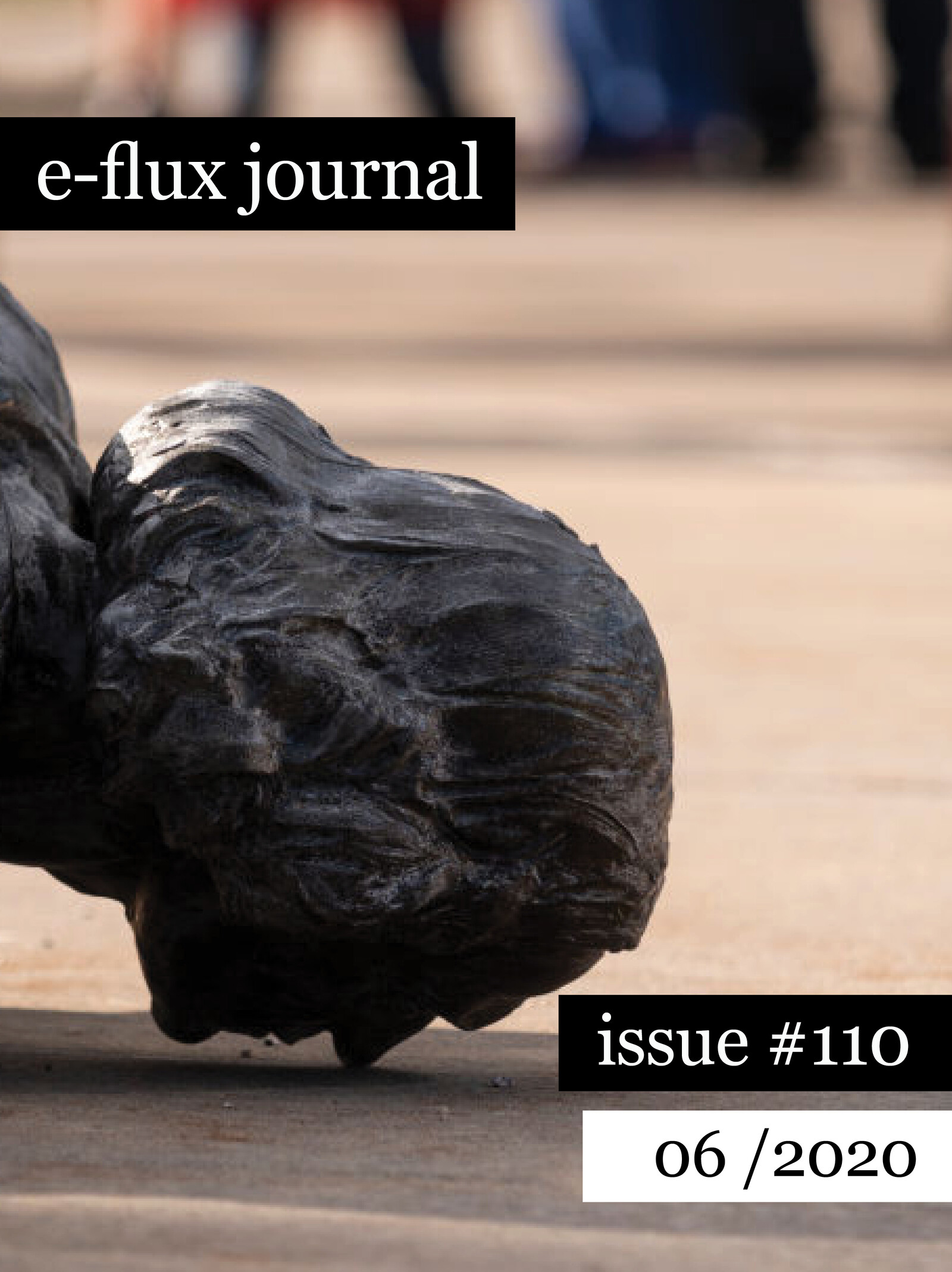
Protesters tear down Christopher Columbus statue outside the Minnesota state capitol, June 25, 2020. Photo: Stephen Maturen/Getty Images.
It’s yet uncertain what the lasting legacy of 2020 will be. “The tradition of the oppressed teaches us,” Walter Benjamin wrote in 1940, “that the ‘state of emergency’ in which we live is not the exception but the rule.” We already know that in the US, the summer of 2020 will be remembered for its sustained state of emergency, when we emerged from stratified isolation and convened, in the millions, in the streets to affirm that black lives matter, that black breath is stolen at an overwhelmingly higher scale by the pandemic and by the largely extralegal military organization known as the police. Benjamin continues: “We must attain to a conception of history that is in keeping with this insight. Then we shall clearly realize that it is our task to bring about a real state of emergency, and this will improve our position in the struggle against Fascism.”
The day after I submitted my portfolio of afterwords, introduction included, George Floyd was murdered by a police officer in Minneapolis, Minnesota, United States of America. We were in the year two thousand and twenty. Time split and the two timelines we were now living shook violently. We were living a pandemic and a global uprising at the same time. It was hard to say what you were saying because every new day brought an incalculable change to your world and to your language. You didn’t know Norway would get involved. You couldn’t have imagined the Minneapolis city council would actually vote to dismantle its police department. You went to sleep and when you woke more people had gathered, more change had happened. One day all of Instagram was a flow of vivid black empty tiles, an act that took up more space than it made. White people began pulling from their shelves crusty books written by black authors and saying, “Read this” or “Follow this person.” Everyone who was anyone was saying, “Black Lives Matter,” but inadvertently were saying, “Some black lives matter,” which was all anyone ever said anyway.
The fantasy of the magical lockdown shares the same premise as herd immunity in that they both turn the task of resolving the crisis over to the laws of nature within a given set of spatial parameters. Hunkering down or heading out, let the virus solve itself! In reducing the role of the state to deciding whether or not to lock down, these fantasies further mirror an ontology of the free market wherein the apparent recession of the state serves as a premise for assuming that rules actively shaped by a whole array of government interventions occur naturally. Perhaps, then, it’s better to trust the men in their little rooms.
Josh Neufeld and I have worked on this comic off and on for about a year, and its topicality and resonance have varied as we did so. In the run-up to publication, when hoarding and price gouging scarred the coronavirus pandemic response, the comic, as already written, seemed to pitch itself in one direction. But as we are about to go to press, with the comic still unchanged, a different question of justice is at stake: people’s right to demand justice and equal treatment as well as equal access to social goods under the law in every aspect of life. No justice, no peace.
Through its aesthetic liberation of things, ideas, and layers of time, art constructs imaginaries of interdependence, which in their own way contribute to a society of solidarity. Today, during this time of pandemic, we like to talk about us all being in the same boat, a metaphor that has replaced the catastrophic image of overcrowded boats of refugees crossing the Mediterranean. But the most powerful metaphor of the present time is the metaphor of the virus, which represents how everything influences everyone. But this is only our view of viruses, our exploitation of its properties. What viruses themselves think about this, nobody knows.
A conversation about immortality acquires a lot more meaning when we are in the middle of a pandemic and so many people are sick and dying. I think this present moment is a bit similar to the original context that triggered cosmism: all the epidemics, droughts, and famines in nineteenth-century Russia. But now there is also the fear of planetary ecological collapse and extinction, and in this context the idea of resurrection becomes much more urgent. There is also a certain hopelessness produced by the decline of reason and social progress, both of which have been encountering countless setbacks in recent decades. All of this makes the delirious optimism of cosmism meaningful and moving, in my opinion.
The Amazon rainforest is a monument. A monument built over thousands of years. The ecology of that place in motion creates shapes, volumes—disperses all that beauty. The Amazon rainforest, the Atlantic coastal forest, the Serra do Mar, the Takrukkrak are monuments that have, for us, the power to open a portal that accesses other visions of the world. The forest provides this. And yet, despite its materiality—its body that can be felled, uprooted as wood—the forest is not seen. In Brazil, there are cities that UNESCO has declared the cultural patrimony of humanity. Meanwhile, we destroy the Atlantic coastal forest, the Amazon rainforest. It’s a game of illusion.
Ironically, at almost the precise moment that progressive movements have become conscious of the necessity of a climate response operating at the necessary scale, the Marxist left has taken a state-phobic turn. Consider “disaster communism.” Confronted with the choice between ruin or revolution, disaster communism opts for ruin as the path to revolution—without considering the form of association necessary to ensure that the revolution ushers in a more equal, just, and sustainable world rather than insulated groups struggling with each other over resources. In lieu of the revolutionary subject emphasized in the Marxist tradition, disaster communism turns to climate breakdown as the agent of history.
In avant-garde rhetoric, as appropriated by contemporary art, the ideas of social engagement and artistic achievement have been almost identical: after art’s self-sublation, its principal goal has supposedly been social engagement. Yet despite the internalization of the avant-garde’s socially oriented legacy, the true episteme and achievement of art since the 1960s has been conceptual surplus rather than social involvement. The negative antisocial character and vicious genealogy inherent to art since early modernist practices fostered various manipulations of this conceptual surplus, which eventually turned into the surplus value—the “metaphysical index”—of art’s economics, as Diedrich Diederichsen puts it. Regardless of whether this surplus is a cognitive gimmick, symbolic capital enhancing the cultural impact of an artwork, or a financialized abstraction simply increasing the cost of art, it has functioned as a hidden power of art in contemporaneity, and has been effectively disguised by art’s stated good will and emancipatory intentions. But what happens to art as an institution of contemporaneity if its codex of self-sublation and the logic of conceptual surplus are demolished by post-secular, post-conceptual cyber-fantasies?
The entrance into the walls, apparatuses, protocols, and functions of the institution depends on defining where a border between inside and out can be constituted: a closed door now opened, a computer server now unlocked, a managerial role now usurped, a philanthropy revenue stream now rerouted. And, most often, the fact that these gestures reify or legitimize the very structure being engaged is taken as inevitable.
It may seem like the pinnacle of frivolity to discuss formal concerns in the present state of exception, yet I would like to insist that form matters, vitally, more than ever. “Formalism,” of course, has long had a bad reputation. The term was weaponized both by Stalinists and by reactionaries in early- and mid-twentieth-century debates about modernism, with the frequent implication that modern art was devoid of meaningful content and social use value. The 1960s witnessed the greatest triumph and ultimate downfall of formalism in art criticism—although, in keeping with the term’s bad reputation, critics such as Clement Greenberg and Michael Fried did not necessarily self-identify as formalists, but rather as modernists. Today, after decades of Greenberg-bashing, a set of contemporary neoformalisms—in theory as in aesthetic practice—often conceives of form in social terms.
The traces of this generation remain disturbing to any dominant order, sometimes even to their former peers and friends. Their true agendas, aspirations, and dreams, however silenced or put on hold, continue resurfacing amidst historical readjustments. Their most intimate convictions were never fully bent, not even by the most sadistic of repressions inflicted on them. A unique invisible thread links the disparate trajectories of intervention of these last protagonists on the shared stage of the short century.
How can I believe that Bernard has already left us? It is true that he has left, but I don’t believe it and I will not believe it. Since I woke up on August 7 and read about the death of Bernard Stiegler, I have listened to his voice on the radio and felt Bernard’s presence, his generosity, his warm greetings and smiles. I haven’t been able to stop my tears. I was on the phone with Bernard just a week ago, talking about an event in Arles at the end of August and our future projects. Bernard’s voice was weaker than usual, but he was positive. He complained that his mobile didn’t work and his printer was broken, and he wasn’t able to buy new ones online because he needed a verification code sent to his mobile. Yet he continued to write. On August 6, I felt unusually weak myself. My belly was aching. This happened to me two years ago when my friend and copyeditor committed suicide. I dragged my body to the post office to send Bernard some Korean ginseng I had promised him a while ago, but the post office was closed due to COVID-19. When I got home, I thought to send him a message telling him that two special journal issues I edited, and that he took part in, were about to come out. I now regret that I didn’t manage to tell him, since I no longer have the chance to talk to him anymore.

